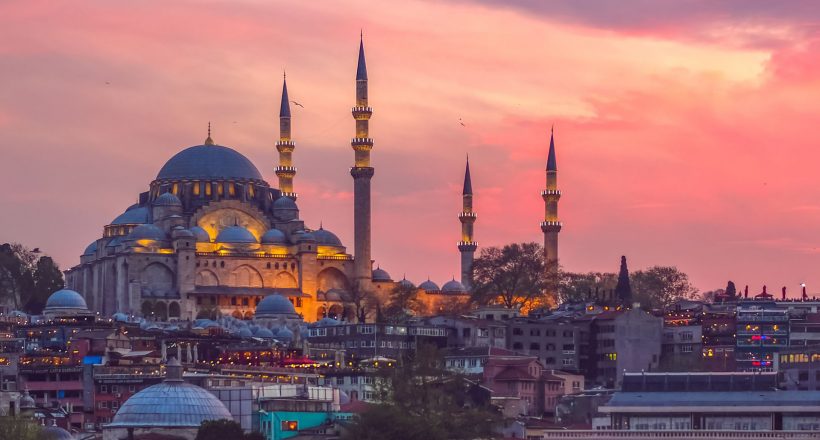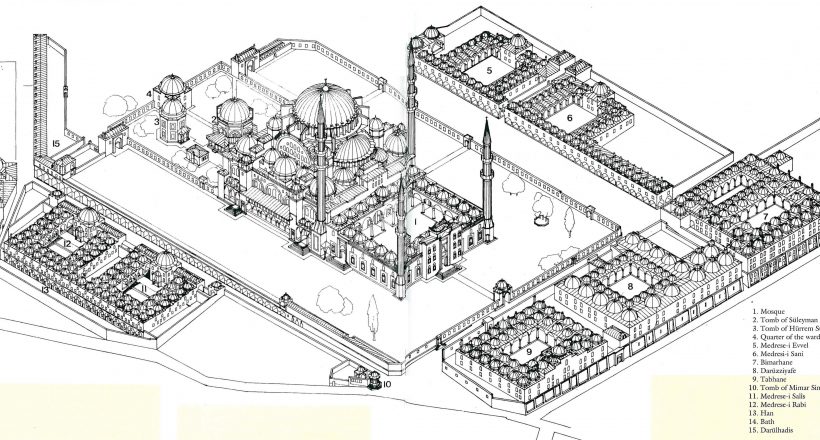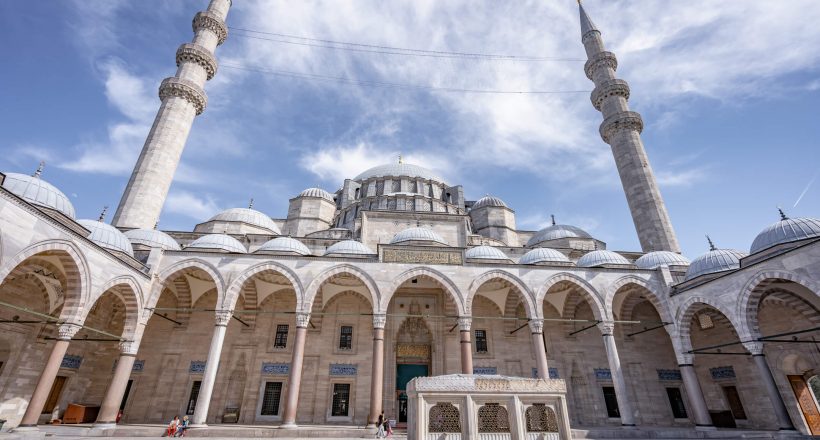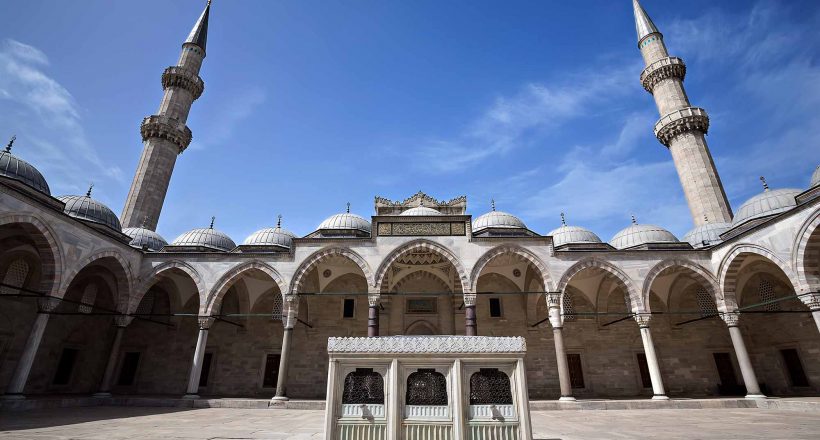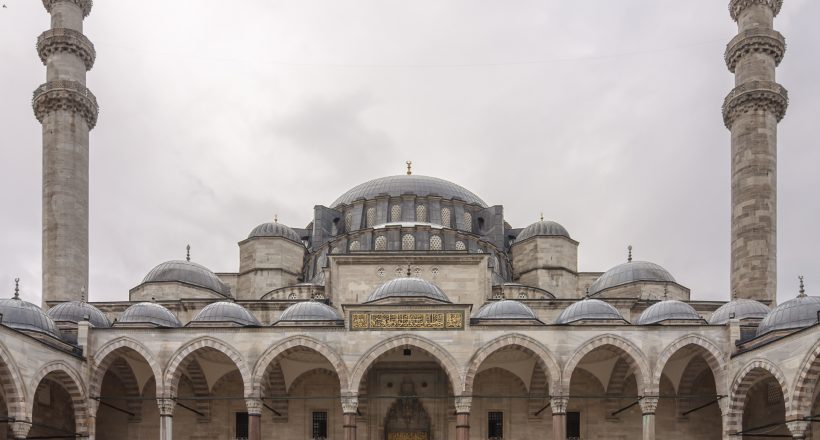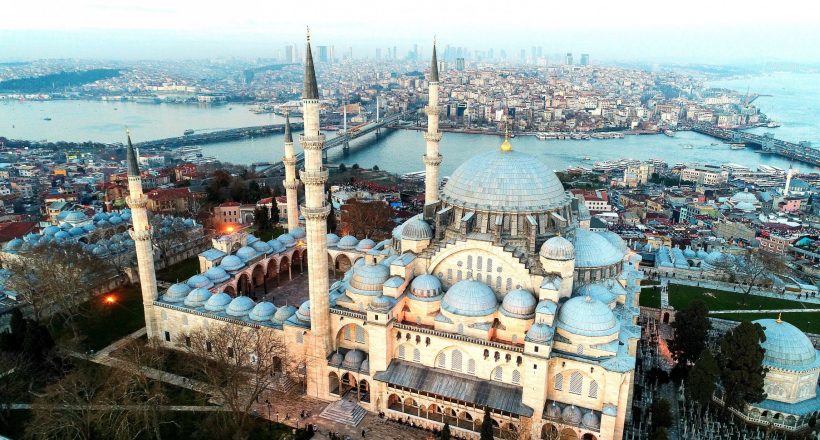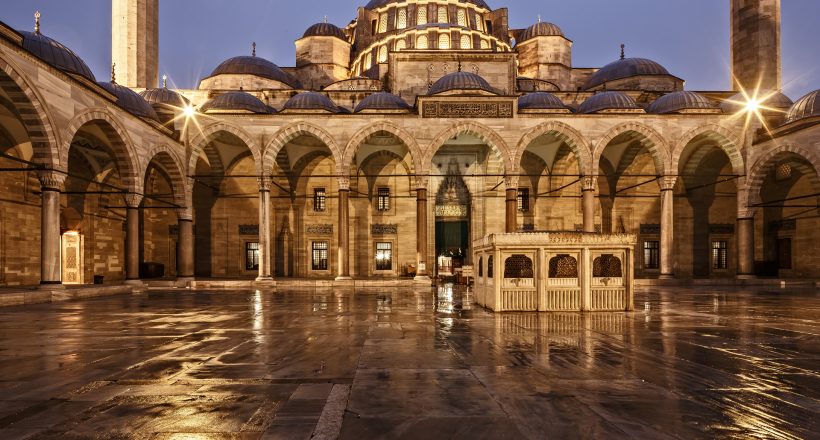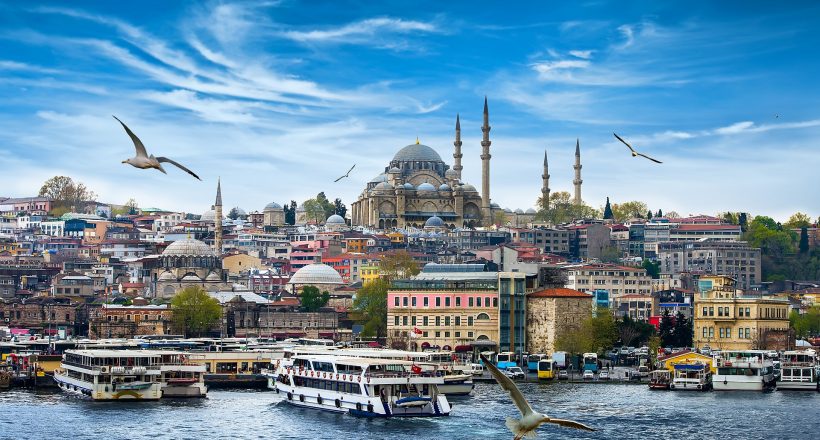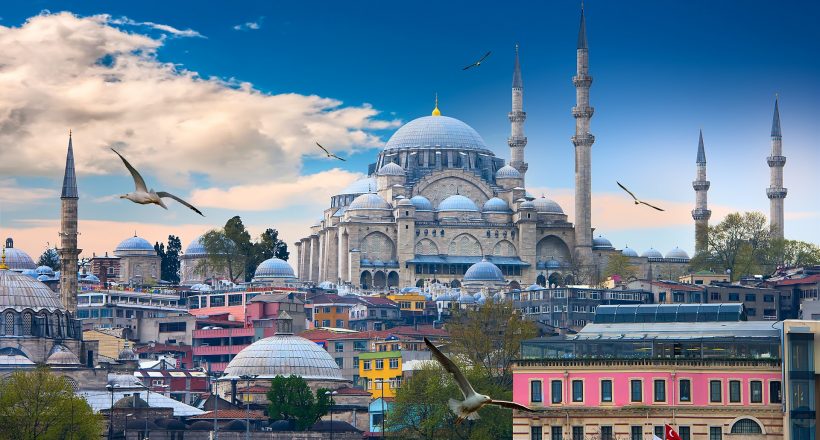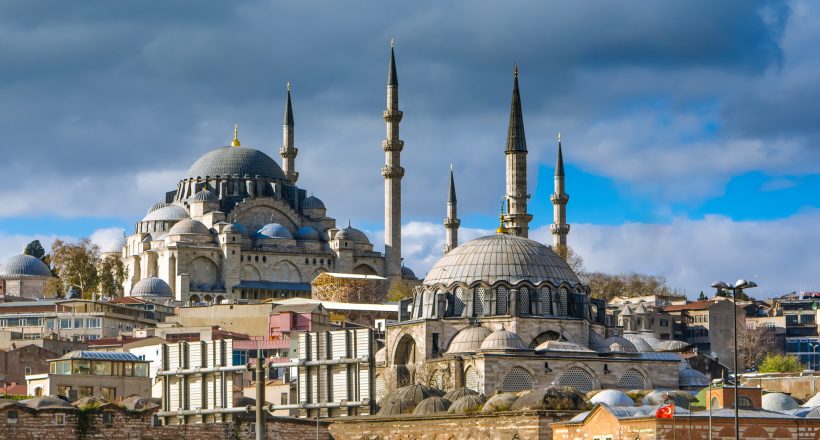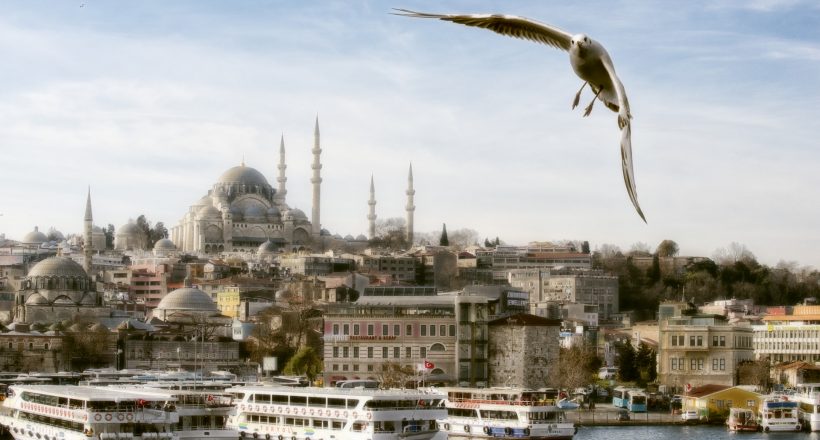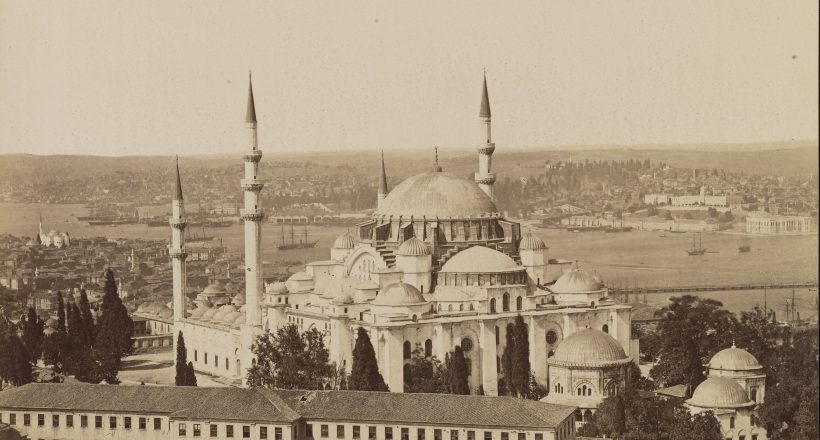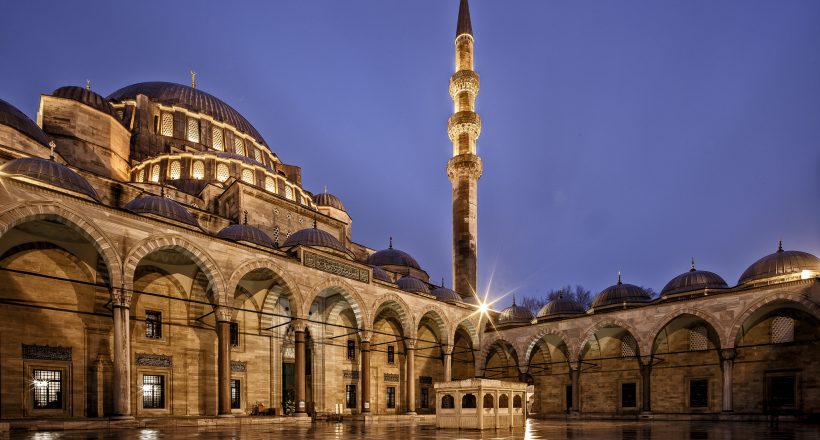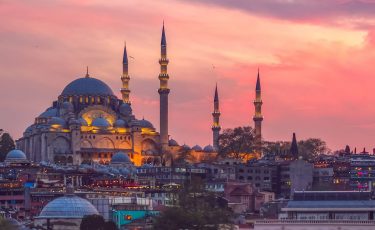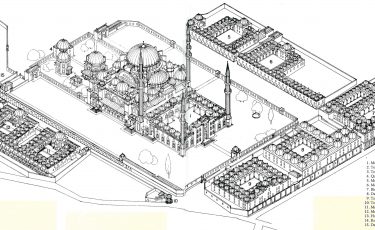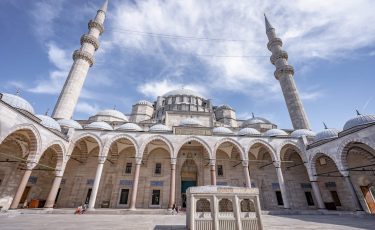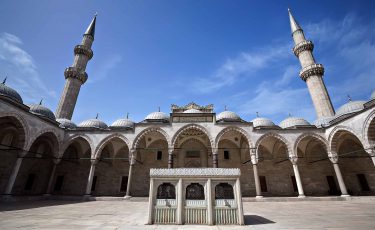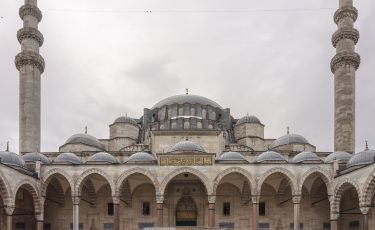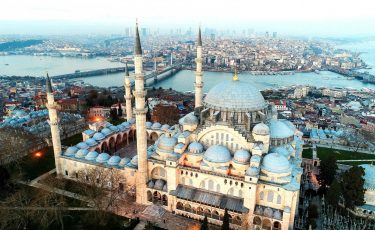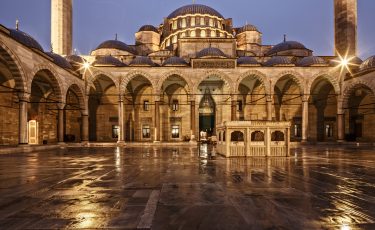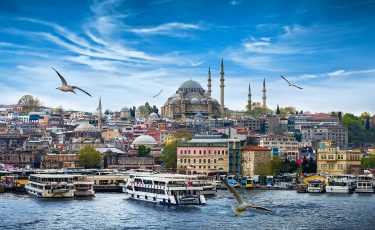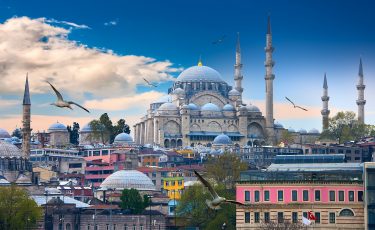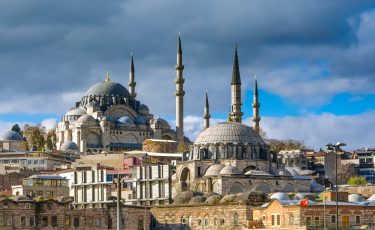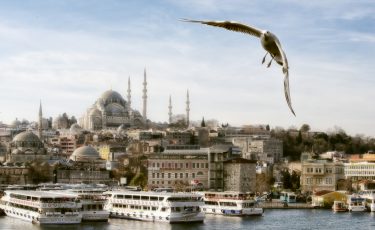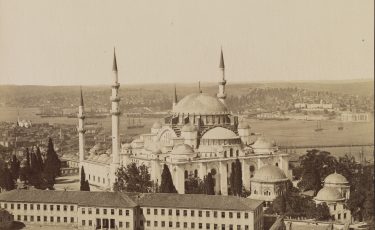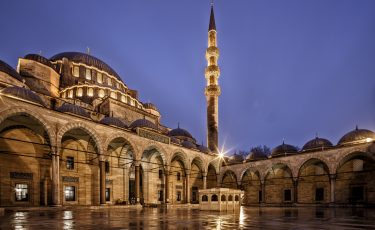Description
Property Name: Suleymaniye Mosque
Inventory No: 90-212-1
Date of infill of the inventory form: 2007-10-24
Country (State party): Turkey
Province: Istanbul (Europe)
Town: Istanbul
Geographic coordinates: 41° 0′ 57.96″ N 28° 57′ 49.84″ E
Historic Period: Classic Ottoman (1453-1579)
Year of Construction: 1557
Style: Classical Ottoman
Original Use: Mosque
Current Use: Mosque
Architect: Architect Sinan
Significance
Süleymaniye Complex is the largest establishment designed by Architect Sinan in Istanbul. It is situated on the third hill of the Historical Peninsula, overlooking the Golden Horn. The choice of the place increases the importance of this complex, as it is dominant in the skyline of the Historical Peninsula, visible from the Golden Horn to the shores of Üsküdar. The construction of complex was ordered by Suleyman the Magnificient to his chief architect, Sinan, and therefore reflects his power and benevolence. The mosque, situated at the center of the complex, is flanked by madrasas on both sides, rising on the terrace over the Golden Horn and thus accomplishing a smooth transition from the enclosing residential areas to the monument itself. Together with its madrasas, Süleymaniye Mosque has been one of the most important religious and educational centers of Istanbul.
An inscription plaque on site dates the foundation of the building to 1550/957 AH and its inauguration to 1557/964 AH, although other documents make clear that certain buildings in the complex were not finished until 1559/966 AH.1 The complex includes a mosque, the mausoleums of Sultan Süleyman I and his wife Haseki Hürrem Sultan, four madrasas dedicated to the four schools of Islamic law, one madrasa dedicated to hadith studies, a Qur’an school, a medical school, a hospital, a hospice, a public kitchen, baths, and fountains. Finally, the architect was given a tomb on the grounds of his own design.
The mosque represents the culmination of the Ottoman style that had been developing in the previous century. It comprises a grand prayer hall in the form of a domed cube and a large open court that precedes the prayer hall on the northwestern side. The main entrance to the courtyard is through a monumental portal on the northwestern façade, which funnels visitors through a gate surmounted by a muqarnas hood. The courtyard is rectangular, paved with marble slabs, and surrounded on three sides by a low, domed arcade. The portico of the prayer hall, taller and grander than the other three arms of the arcade, occupies the fourth side of the courtyard. At the center of the courtyard is a fountain in the form of a rectangular cube, made of intricately worked marble screens and panels.
Selection Criteria
i. to represent a masterpiece of human creative genius
ii. to exhibit an important interchange of human values, over a span of time or within a cultural area of the world, on developments in architecture or technology, monumental arts, town-planning or landscape design
iii. to bear a unique or at least exceptional testimony to a cultural tradition or to a civilization which is living or which has disappeared
iv. to be an outstanding example of a type of building, architectural or technological ensemble or landscape which illustrates (a) significant stage(s) in human history
State of Preservation
The mosque was damaged by fire in 1660 and was repaired. Having a simple structure, Süleymaniye the Magnificent was defaced in the repair place, especially during the time of Sultan Mecid. The engineer named Fossati, who was brought from outside for the repair of Hagia Sophia, used putty starting from the elephant feet to the arches and destroyed it with oil paint. Later, these paints were cleaned with great difficulty.
The mosque, whose inner courtyard was used as a saddlery during the First World War, survived another fire and finally its minarets, domes and arches were repaired by the Foundations in 1956.
In 2007, restoration started by the Directory of Waqfs , and was completed in 2010 and opened to worship.
References
Kuban, Doğan. Ottoman Architecture. Translated by Adair Mill, 277-294. Woodbridge, Suffolk: Antique Collectors’ Club Ltd., 2010.
Necipoğlu, Gülru. The Age of Sinan: Architectural Culture in the Ottoman Empire. London: Reaktion Books, 2005.
Mabedler Şehri İstanbul’un Tarihi Mescidleri ve Camileri, Edhem Ruhi Öneş, İstanbul
İstanbul Camileri I ve II.cilt, Tahsin Öz, Türk Tarih Kurumu, Ankara, 1962
İstanbul Ansiklopedisi, Reşad Ekrem Koçu, İstanbul, 1952


